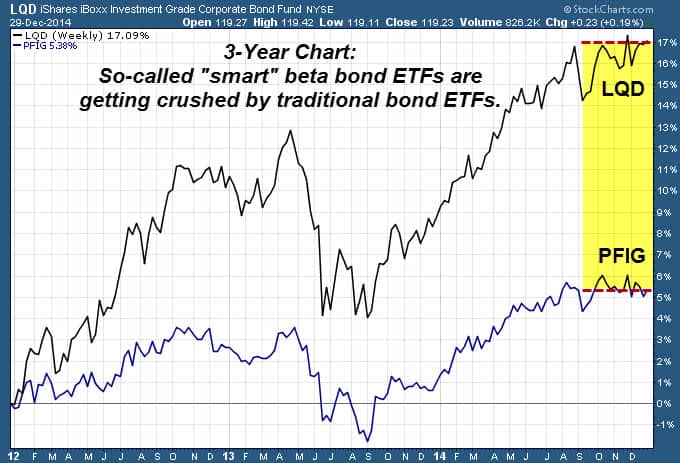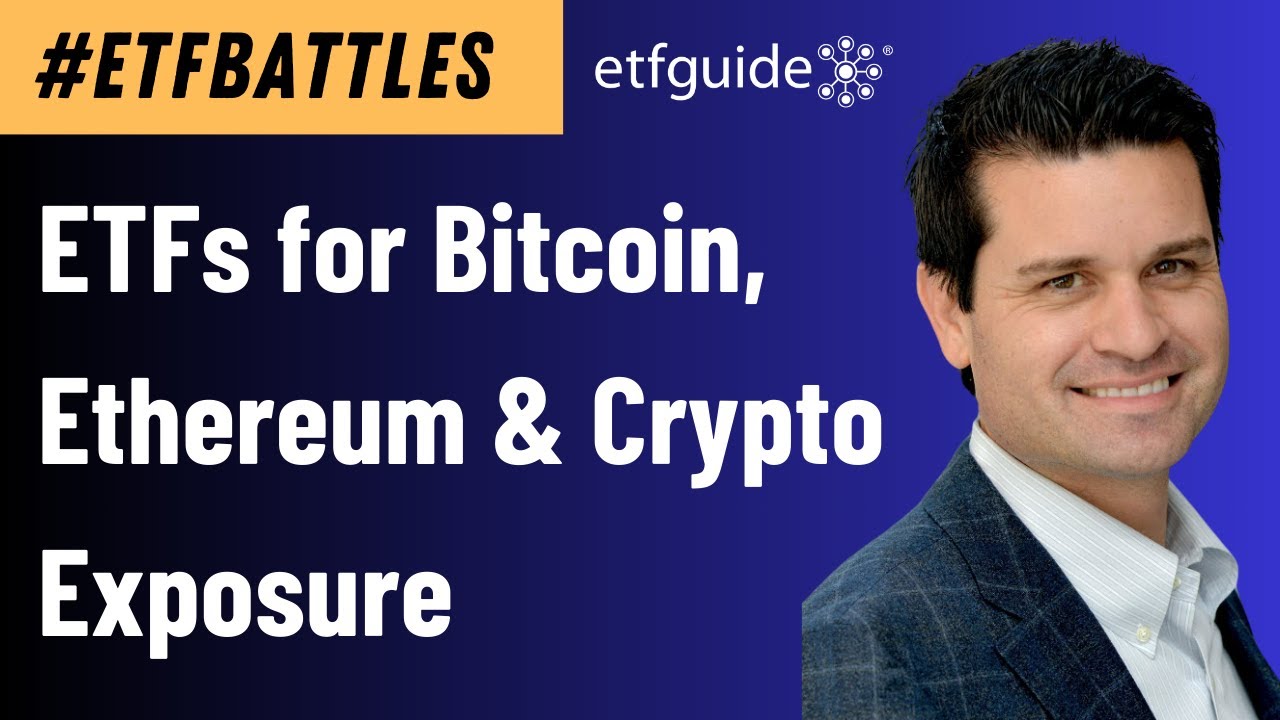Never mind what the cute marketing brochures or what nouveau indexers say. The trumped-up allegations that beta is somehow “smart” or “better” is a grand ole fairytale.
(Audio) Listen to Ron DeLegge @ The Index Investing Show
While “smart beta” types (formerly referred to as fundamental indexers) are pumping up their equity concoctions (NYSEARCA:PRF), their alternative bond strategies are getting crushed.
The iShares iBoxx Corporate Investment Grade Bond Fund (NYSEARCA:LQD) – a bond ETF with an old school market cap weighting approach – has gained more than 17% over the past three years while its new school alternative beta competitor the PowerShares Fundamental Investment Grade Bond Fund (NYSEARCA:PFIG) has delivered a subpar 5.38% return. (See chart below) You don’t need to be a CFA or Ph.D. to understand that this type of massive underperformance in any market – especially the stingy bond market – isn’t a very smart result.
By the way, this same phenomenon of significant underperformance with new school alternative beta bond ETFs being out-distanced, is also evident in other segments of the bond market.
The SPDR Barclays High Yield Bond ETF (NYSEARCA:JNK), for instance, has gained 22% over the past three years, while its peer rival the PowerShares Fundamental High Yield Bond ETF (NYSEARCA:PHB) has lagged by a disappointing 3%.
Likewise, so-called “smart beta” investing has failed miserably in international debt markets.
The iShares JPMorgan USD Emerging Markets Bond Fund (NYSEARCA:EMB) has crushed the PowerShares Fundamental Emerging Markets Bond ETF (NYSEARCA:PFEM) by 3.6% over the past year. Outperformance of 3% to 3.5% in the bond market – where long-term returns are typically smaller compared to stocks – is nothing to sneeze at.
We just examined three distinct segments of the bond market where alternative beta bond ETFs have utterly failed. And as they say; once is an accident, twice is a coincidence, and three times is a trend.
What about the fact that old-school market cap weighted bond indexes assign bigger allocations to the largest issuers of debt? Isn’t that problematic? Even with this supposed shortcoming, old-school bond index ETFs are still effortlessly beating newer alternative beta bond ETFs.
Looking ahead to 2015, I sincerely hope more people, including the financial media, will start referring to “smart beta” investing to what it really is: Strategic or alternative beta investing and nothing more.
Follow us on Twitter @ ETFguide




